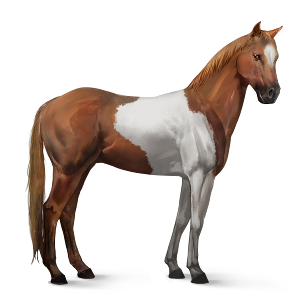

The new hybrid had an unusual natural affinity for keeping cattle safe, making it popular with cattlemen on ranches. Then, settlers crossbred the colonial Quarter Horse with Mustang horses domesticated by Native American tribes like the Shoshoni and Comanche. Conquistadors introduced these animals into the territory that covers the Southwestern United States and Mexico nowadays. They came across semi-wild horses on the Great Plains descending from the Spanish breeds. Pioneers who settled the West in the 19th century looked for a fast and hardy horse. That was the start of a lengthy relationship between the Thoroughbred and Quarter Horse, named after the 0.25 mile (0.40 km) race distance it excelled in. Many colonial Quarter Horses became a part of the earliest American studbooks as the Thoroughbred breed became introduced in America. When placed against a Thoroughbred, local sprinters were frequently victorious. Often, these tracks consisted of nothing more than a straight road or a flat piece of ground. The resulting offspring was small, hardy, and fast, so farmers often used them as workhorses during the week and racehorses on weekends.Īs flat racing became increasingly popular among colonists, the Quarter Horse gained more appeal as a sprinter over shorter runs. Thoroughbreds like Janus influenced the next generations and gave essential genes to the colonial Quarter Horse development. It came to colonial Virginia in 1756 and became a foundation sire of all today’s American Quarter Horses. Janus, a Godolphin Arabian grandchild born in 1746, was one of the most notable imported horses. The Thoroughbreds imported from England were the first horses crossbred with native colonial horses on the US Eastern seaboard.


 0 kommentar(er)
0 kommentar(er)
